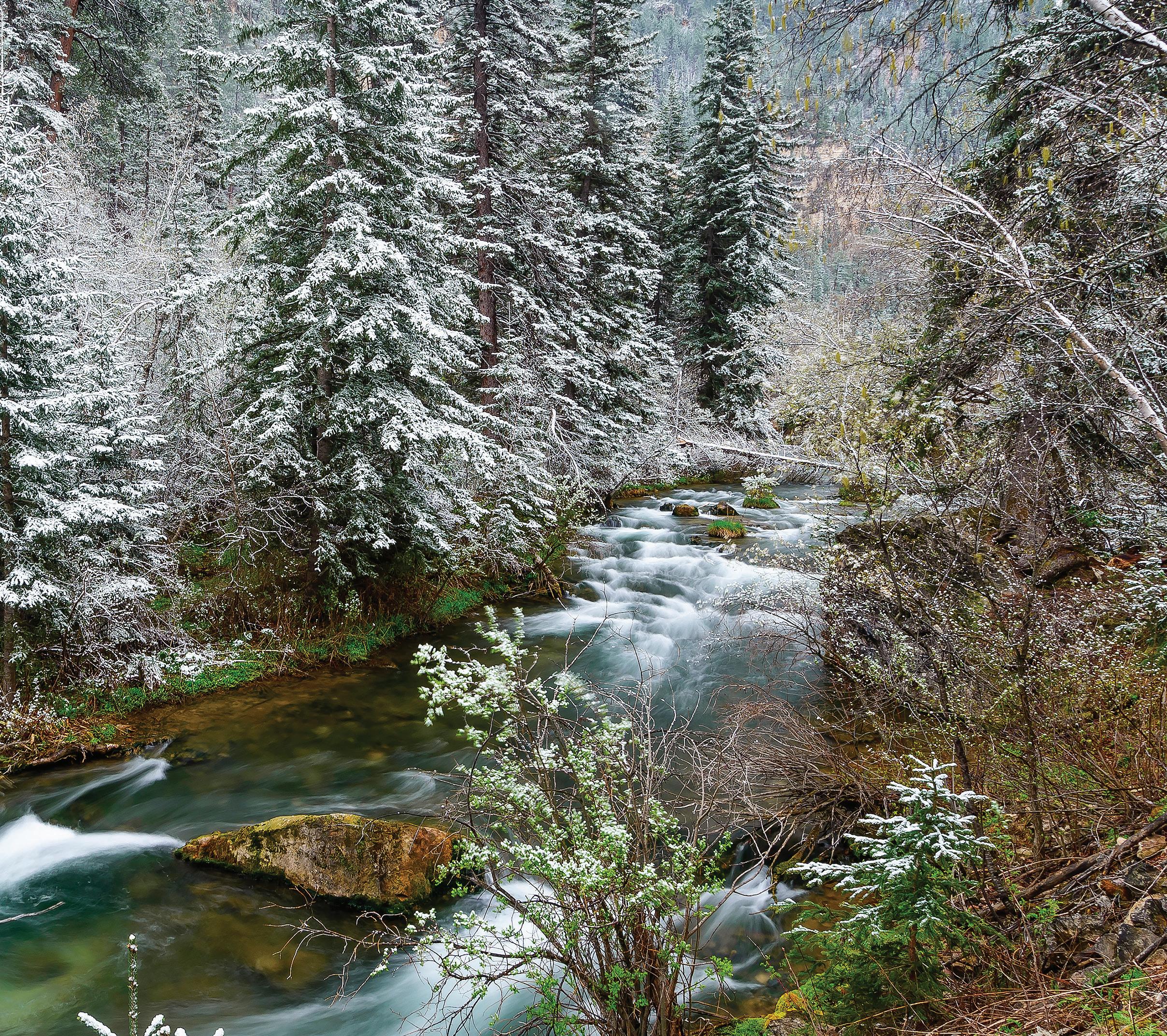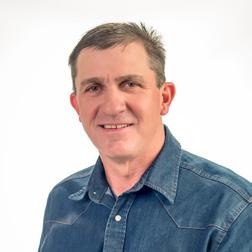U.S. Representative Dusty Johnson addressed Annual Meeting attendees via video message. He offered this encouragement: “Infrastructure has been a passion throughout my career … We’re going to make sure that water infrastructure remains front and center in the work we’re doing on the Farm Bill … I know you’re working hard. I’ll keep working hard. Thanks for what you do.”

The WDRWS 2023 Annual Report covers a variety of topics, including conservation, budget, canvassing, upcoming events and more.

Annual Meeting 2023
This September we held our Annual Meeting for 2023. The event was held in Spearfish and it was an exciting day to reflect on how far this project has come.
Thank you to our incredible speakers. Each brought a fresh, interesting and unique perspective on the topic of water security in western South Dakota.
Presenters included S.D. State Senators Helene Duhamel and Lee Schoenbeck, S.D. State Representative Peri Pourier, as well as perspectives from the U.S.
Bureau of Reclamation, the U.S. Geological Survey, S.D. Mines and other insightful points of view.
U.S. Representative Dusty Johnson addressed attendees of the Annual Meeting via video. He offered this encouragement: “Infrastructure has been a passion throughout my career … We’re going to make sure that water infrastructure remains front and center in the work we’re doing on the Farm Bill … I know you’re working hard. I’ll keep working hard. Thanks for what you do.”
Check out some of the coverage by scanning these codes:


User Canvassing Update
In 2024, the engineering team will be working with Members to evaluate draft allocation requests that will guide the concept design and cost evaluations. Now is the time to plan for becoming a Member so the needs of your community will be included. Participation in this planning effort as a Member does not obligate participation in the final design and construction but is essential to understanding the scope of need and translating that to a design concept that can be used for funding development and progression of the project.
NEWSLETTER issue 3 2023
WDRWS
WESTERN DAKOTA REGIONAL WATER SYSTEM
w
Spearfish: planning ahead
The city of Spearfish takes its striking name from the practice of the Lakota and other groups who “speared” fish in the fast-flowing waters of Spearfish Creek. Originally called Queen City when it was established in 1876, the settlement’s location in a broad valley was more conducive to agriculture than mining. The town served an important need by supplying the miners working claims in Lead, Deadwood and other mining camps with food.
While other mining communities experienced boom-and-bust periods, Spearfish prospered as a result of a diverse economy that focused on agriculture and commerce; irrigated farming, cattle ranching, dairy processing, logging, milling and retail were all thriving enterprises that made the town an attractive destination for those who weren’t comfortable taking their chances on mining.
Today, Spearfish is a community of approximately 12,000 full time residents, with the population spiking

during the school year with the students of Black Hills State University attending classes on campus.
Current water supply
“Spearfish’s water supply currently relies on seven wells in the Madison Aquifer,” said Nick Broyles, the Public
Mark your calendars
Quarterly Technical Sessions — open to the public
WDRWS wishes to share technical information as work progresses on the feasibility of delivering bulk water to systems in western South Dakota. Topics will range from project organization, legislative issues, emerging science on drought, and Tribal water law. Join in to learn more at noon on the first Friday of the first month of each quarter.
This technical session and
upcoming sessions are open to anyone interested in learning more about important technical issues associated with ensuring an abundant, quality water supply for western South Dakota.
Past technical sessions can be viewed at wdrws.org/technical
Upcoming
January 5, 2024 at noon
Preview of the key issues in the 2024 Legislature with Western South Dakota Legislators

Works Director of the City of Spearfish. “By the end of 2025, two additional Madison Aquifer wells will have been added to Spearfish’s water supply.”
Towns, cities and communities throughout western South Dakota have been enjoying the plentiful and overall very high quality water of the
Madison Aquifer for generations.
The Madison and the region’s other aquifer, the Minnelusa, are adequate to maintain the needs of current users — but increased demand for water through population growth and reduced aquifer capacity caused by drought is a topic that is at the forefront of most municipalities and rural communities.
Diversifying water resources
Becoming a member of the Western Dakota Regional Water System was an obvious choice for the city of Spearfish. “The WDRWS will provide an opportunity to diversify our water supply and aid in meeting the water supply needs for our current population and anticipated future growth,” Broyles said. “Diversifying our water supply will help make our system more resilient to challenges such as unexpected, sustained drought.”
Become a member
Individuals and water system organizations of any size are able to support the work of WDRWS. So whether you’re a subdivision, a municipality or an organization who has a stake in our water future, please consider joining.
Membership runs on a calender basis, starting on January 1 of each year.
Class 1 Member
Voting member –$1500 annual dues
An organization with at least 200 residential connections or commercial equivalent
Class 2 Member
Voting member –$750 annual dues
An organization with less than 200 connections or commercial equivalent or an organization with over 200 residential connections that is fully built out within its jurisdictional territory
Associate Member
Non-voting member –$375 annual dues
Any firm, corporation, political entity, or subdivision not eligible to be a voting member but desiring to support WDRWS
Supporting Individual
Non-member –$50 annual dues
Any individual or interested party desiring to support WDRWS
Share this newsletter Read and share this newsletter digitally by scanning this code: or visit wdrws.org/ newsletter
Rapid City, South Dakota 57709
Looking back and ahead
2023 has been a great year for WDRWS. We’ve gained members from both larger and smaller systems and organizations. As we’ve had conversations with leaders throughout the region, we’ve discovered that sustainable access to abundant and quality water is a topic that is at the forefront of the minds of many community leaders. We’re grateful for 2023 and we’re excited to see what 2024 holds. Thank you for believing in the future of western South Dakota.
I would like to welcome three new faces to the WDRWS team.
First, welcome to Jim Martin and Todd Williamson, our two newest board members.

Jim is the Manager of the Colonial Pine Hills Sanitary District. This sanitary district
provides “safe, clean, sparkling” water to over 400 residents and two businesses located in multiple developments south of Rapid City. This water provider has a long history, starting in 1983. You can learn more about the Colonial Pine Hills Sanitary District at cphsd.org
Todd is the Operator of Butte-Meade Sanitary Water District.

Founded in the 1960s, Butte-Meade was one of the first rural water districts in South Dakota. Through a conservative approach, this water district has been able to provide affordable water to ranchers in western South Dakota for decades. Learn more about Butte-Meade Sanitary Water District at buttemeadewater.com. Next, I’m excited to introduce

Katie LeClair as the new Operations Manager of WDRWS. She has over a decade of experience supporting policymakers and community members. During that time, she has honed her research, analysis, data management and messaging skills. She is looking forward to joining a team working to make a difference for our region.
We’re also pleased to announce that WDRWS now has an office in Rapid City. Located in the Creamery Building in Downtown Rapid City (201 Main Street, Suite 104). This location will serve as a central location to serve the members of WDRWS.

WESTERN DAKOTA REGIONAL WATER SYSTEM
Become a member by filling out this ticket and mailing it to Western Dakota Regional Water System, PO Box 484, Rapid City,
57701. You can also join electronically at wdrws.org/membership. Member Information Organization First Last Phone Number Email Address Membership
Class 1 Member Class 2 Member Associate Member Supporting Individual
Cheryl Chapman Executive Director cheryl.chapman@ wdrws.org (605) 519-7333
SD
Choice (circle one)
PO Box 484













